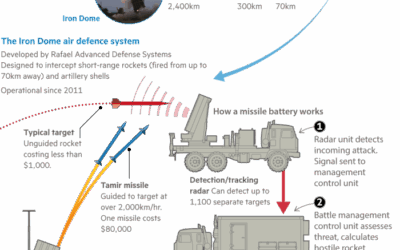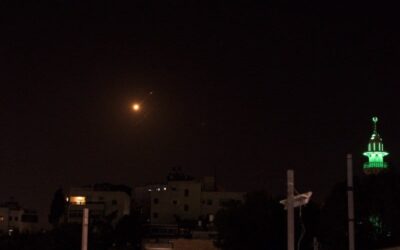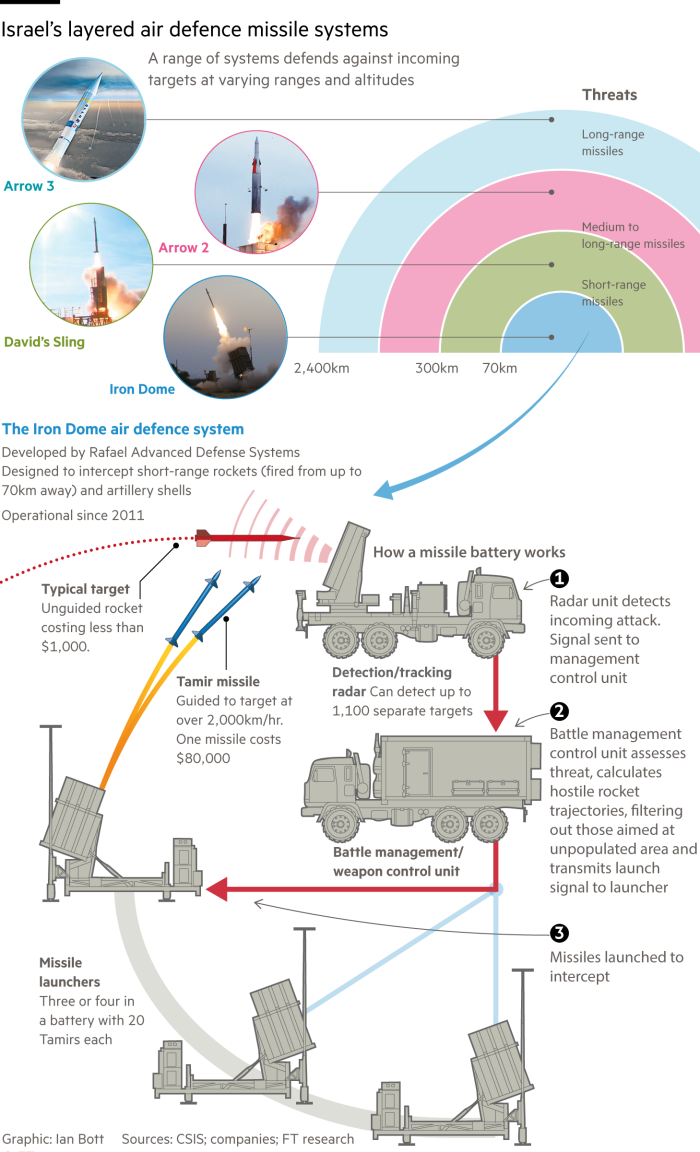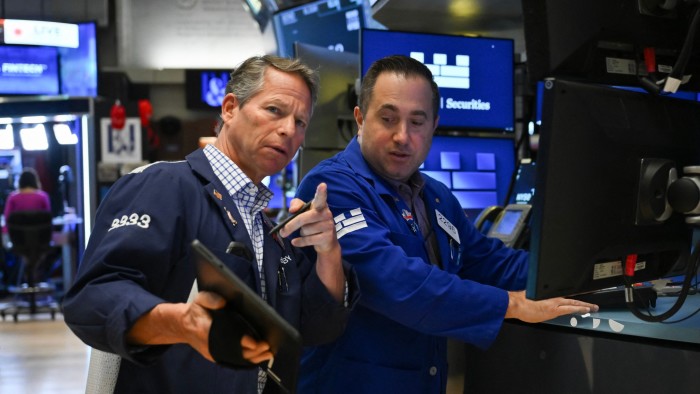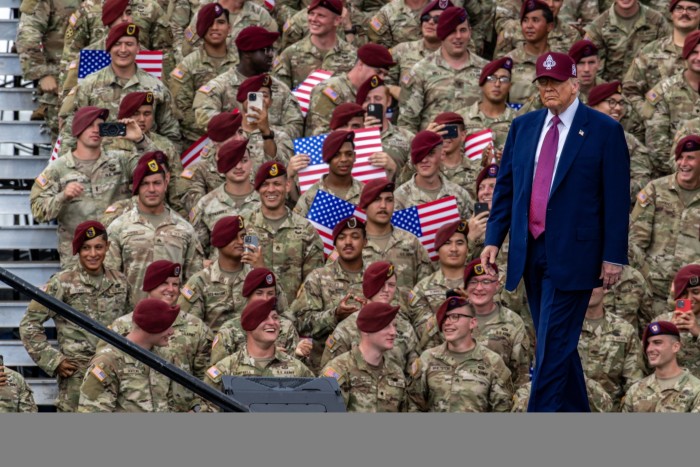Iran’s long arm is not so muscular anymore
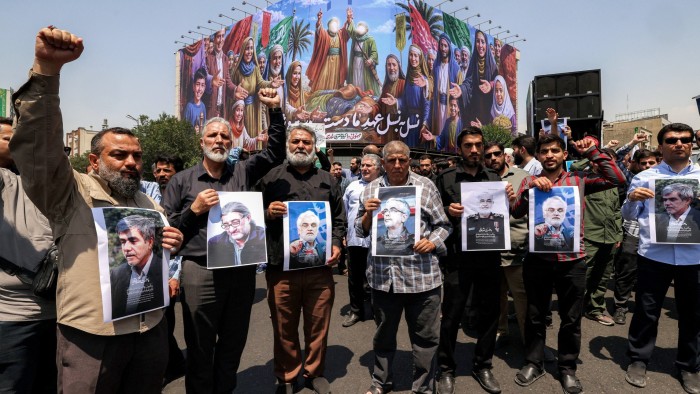
Unlock the Editor’s Digest for free
Roula Khalaf, Editor of the FT, selects her favourite stories in this weekly newsletter.
The writer is director of regional security at the International Institute for Strategic Studies
The Iranian commanders who fatefully gathered in a Tehran compound last night or were killed as they slept spent decades building the regional militias, the arsenal of missiles and drones, and the nuclear programme that compelled others to take Tehran seriously. They believed they had found the right formula for the defence of Iran’s regime, territory and critical infrastructure. It was a costly endeavour that alienated many of the country’s neighbours and faraway powers and caused havoc in the Middle East, but it gave its leadership an inflated sense of purpose and power.
It took two waves of attacks by Israel to shake the whole edifice. Last October, it took out most of Iran’s advanced air defences, after which Israel became the master of the air and of the clock.
With Donald Trump entering the White House, Israeli Prime Minister Benjamin Netanyahu got the acquiescent partner he needed, with an unlimited supply of weapons and intelligence regardless of the horrors he inflicted on Gaza. Early this morning, Israel decapitated much of Iran’s military and scientific leadership and destroyed some nuclear and military facilities.
Notwithstanding its claim that this was a pre-emptive strike, Israel is the clear aggressor in this case. Judging from the subdued western statements this morning, however, this fact no longer seems so meaningful as international law and diplomatic norms erode in plain sight. This attack is about raw power, not about regional stability or better outcomes for everyone.
Israel has embarked on a campaign that will necessitate several waves of attacks, the key constraint being the availability of aircraft and the distance between its air bases and targets in Iran. The critical facility of Natanz has been hit hard, but other installations remain intact, notably the Fordow enrichment plant, buried deep beneath a mountain.
Israel has once again demonstrated undeniable intelligence superiority and operational prowess. If confirmed, the reports that commando units and drone systems pre-positioned inside Iran were key to the first wave that took out senior commanders and weapons systems suggest that Israel has more tricks up its sleeve. It will keep the advantage and could expand the target list to kill Iran’s supreme leader, Ayatollah Ali Khamenei, and destroy or disable its energy installations.
This will keep the region on edge for weeks to come. Having misjudged Israel’s risk appetite and overstated its own power, Iran has remained behind the curve ever since Hamas’s brutal assault on October 7 2023.
If it can’t defend itself and if the mantra of strategic patience is no longer credible, Tehran has only one option: attack. Khamenei issued a typically bombastic threat: “That [Zionist] regime should anticipate a severe punishment. By God’s grace, the powerful arm of the Islamic Republic’s Armed Forces won’t let them go unpunished.”
A man who has been criticised internally for having been overly cautious, he may now mean it. However, it is not clear his far-flung proxy forces can deliver the blow. Iran’s long arm is less muscular and much shorter than before. Bashar al-Assad is gone, Hizbollah is no longer a strategic force and, while the Houthis can disrupt Red Sea traffic, they cannot project power in a sustained way. Russia and China will not come to the rescue.
So far, Iran’s priority has been to avoid dragging the US into the war but America’s exact role will be a source of anger and confusion. Did Trump take part in a sophisticated Israeli campaign of deception all along? Is the US facilitating Israel’s attacks despite its denials? Can Tehran trust that the US won’t actively join the war if it refrains from targeting “US interests or personnel”, the red line stated by Marco Rubio? In contrast, Israel may well have an interest in implicating the US further. If an Iranian missile breaches Israeli defences and kills civilians, pressure will rise on Trump to destroy Iran’s missile sites and to allow Israel a freer hand.
Iran’s best option for retaliation presents the hardest dilemma. The easiest targets are the closest, in the Gulf region. Hitting energy facilities and critical infrastructure there and obstructing the Strait of Hormuz will impose a cost on the global economy and test US commitment to its partners, but it will also alienate the very countries (Saudi Arabia, Qatar and the UAE) that could do the most to de-escalate the conflict. Given it will be difficult for the US to provide them with the protection it extends to Israel, Washington may decide that offence is the better course of action.
While there won’t be many Arab tears shed for Iran, that does not amount to support for Israel. It is the unquestioned military supremo in the Middle East but everyone understands that Netanyahu does as he wants and expects others, including his ostensible partners, to cave, adjust to and manage the aftereffects of his decisions.
Israel is not building a better tomorrow, it is destroying whatever could threaten it. If in the meantime the war distracts from the horrifying civilian toll in Gaza and derails the international conference on Palestinian statehood planned for next week, all the better for Netanyahu and his extremist coalition.
